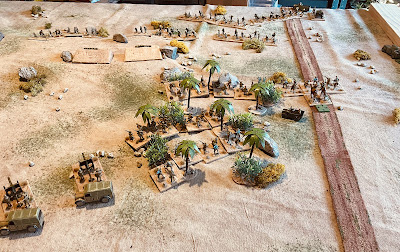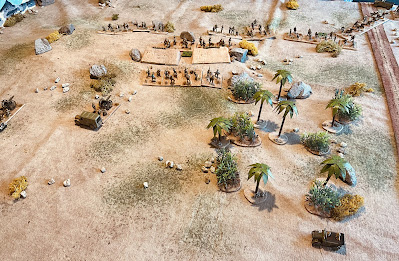As a mainly a solo wargamer I will often use on chance cards to add a level of unpredictability into my wargames. Most of my games use One-Hour Wargaming (OHW) rules or a variant of those OHW rules. So when I started to introduce chance cards into my games, I went with the suggested chance cards in chapter 22 of One-Hour Wargames by Neil Thomas. Where both armies have an identical deck of 15 chance cards comprised of: 5 beneficial cards, 5 adverse cards, and 5 no effect cards.
 |
| Chance cards |
When beginning my 2nd Punic War campaign I wanted to somehow show the differences between the opposing armies. The obvious approach would be to add additional factors to the rules for each army and try and deal with the resulting rule complications. This was not really a path I wanted to take with the rules, as I like simple rules, so I opted to use different chance card decks for each army to reflect the attributes of the army represented. For example:
The Roman army with its legions were well organised and disciplined, but not always well led, particularly in the early stages of the campaign. So the Roman chance card deck is adjusted by:
- Replacing a No Ammunition card with a Confusion card to represent the poor leadership and the good organisation of the armies by not having them run out of ammunition as frequently.
- Replacing an Initiative card with a Rally card to represent the solid and well disciplined troops lacking leadership.
Full details of the approach used in the campaign can be found in the link below.
https://gridbasedwargaming.blogspot.com/2021/07/ancients-campaign-turn-1-game-3-battle.html
 |
| A Samurai game underway using chance cards |
Because I had enjoyed gaming using different army chance card decks for my Ancient games, I wanted something similar for my Samurai games using a variation of OHW Pike and Shot rules. I have included the draft rule variation in the tab at the top.
The differences between samurai armies of the Sengoku period (1467-1615) which I am wargaming was not a lot. So the question is - what would differentiate the chance card decks between armies?
I looked around at other options and read about how generals of armies would adopt certain tactical formations and adapted them to the situation they found themselves in. These tactical formations were given names to reflect their use and how they looked when deployed.
 |
| A few of the tactical formations from “Samurai Armies 1550-1615” by S.R. Turnbull. |
The names are quite poetic, Here are some examples:
- Kakuyoku (“Crane’s Wing”) - Used to surrounding at army.
- Ganko (“Birds in flight”) - A flexible deployment which can be changed as the situation unfolds
- Saku (“Keyhole”) - a defensive deployment to be used against a fierce charge.
With 6 units per side in OHW games these tactical formations are not going to be easily adopted, instead the formation chosen reflects the tactics used with an emphasis on: attacking with movement cards, defensive posture with rallying cards, or blunting attacks with arquebuses and having sufficient ammunition supplies.
This should provide some period flavour to the rules. Sticking with a deck made up of 15 cards, one card for each turn, a player selects 6 tactical cards determined by the tactical formation (or approach) taken. These 6 cards will be added to a deck comprising of:
- 6 x Tactical cards (selected)
- 4 x Chance cards (with adverse conditions for an army)
- 5 x No effect cards
For the games each army selects from a table of 7 tactical formations. Each tactical formation comes with a combination of 6 tactical cards. The table is presently limited to 7 choices. This is because I wanted a minimum of 1 type of tactic card selected and never allow more than 3 tactical cards of a particular type. I may change this in the future after playing some more games.
 |
| Tactical Chance Card Table |
Once the associated tactic cards are added to the chance card deck along with the 4 chance cards and 5 no event cards. Both player’s decks are shuffled and placed face down ready for one card to be drawn at the start of each turn.
The 4 chance cards I am currently using to add adverse outcomes to the deck are:
- 3 x Fog of War - Only D3 units may move or shoot during your turn.
- 1 x Changing Loyalties - 1 non-skirmish unit takes D6 hits.
 |
| A samurai game in progress |
Using this process for creating a chance card deck allows players to partially influence the game, or maybe their luck.
I do have generals in the game who are assigned to a foot or mounted samurai unit. In the event of the general’s assigned unit being eliminated, any tactical cards drawn are treated as no effect cards.
As the photographs suggests I now have my Samurai armies on the tabletop.









































